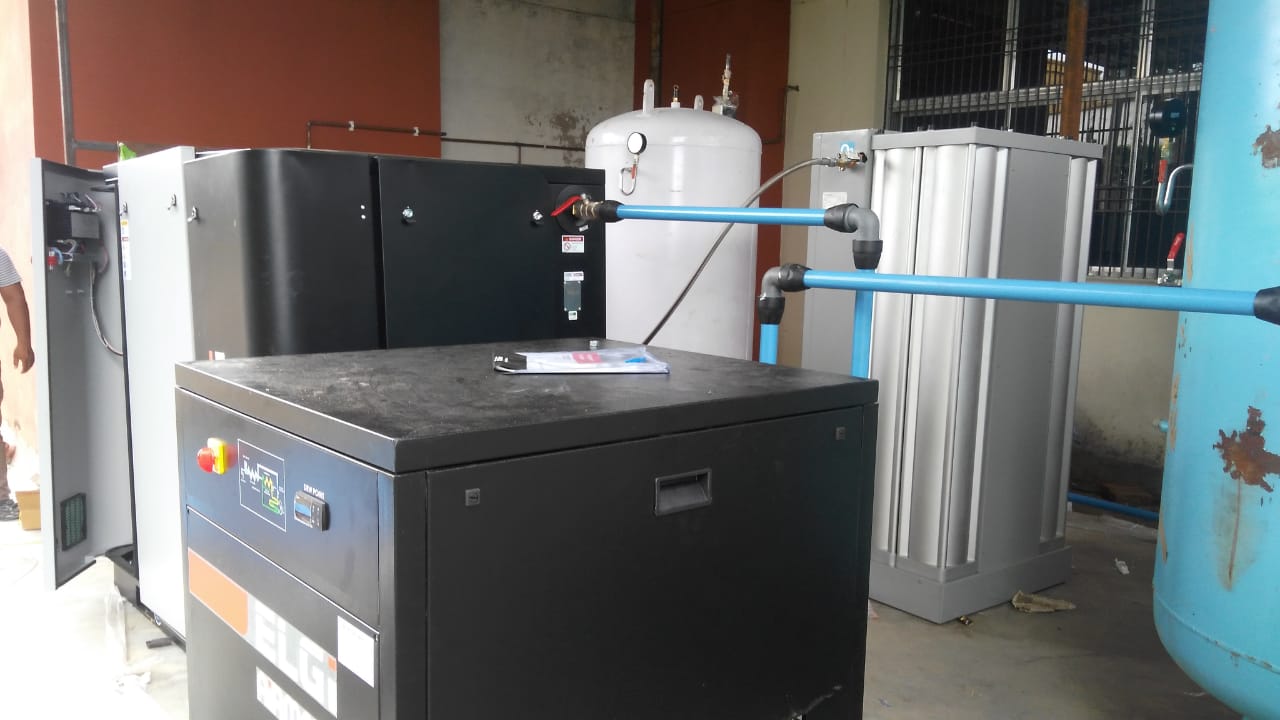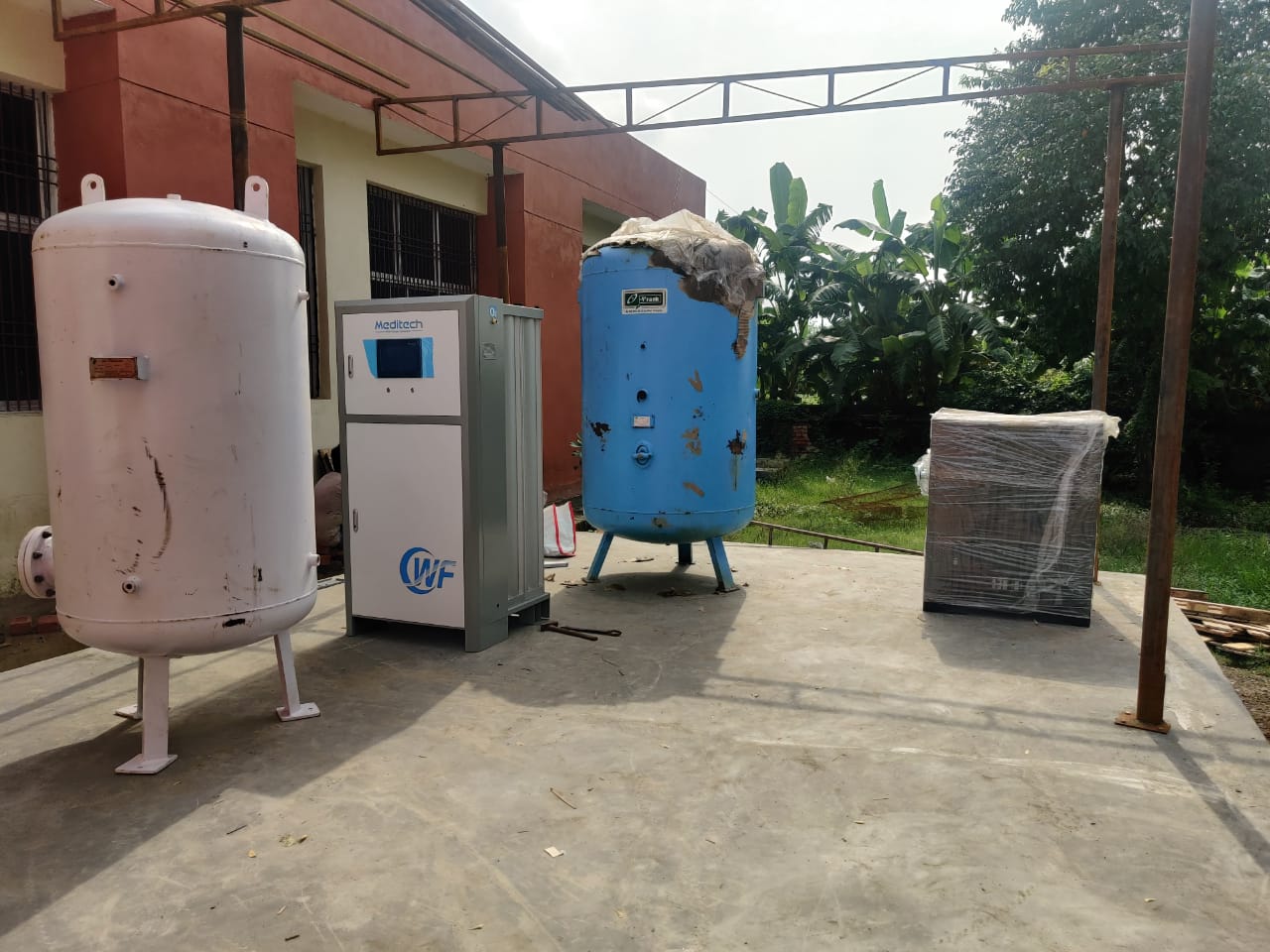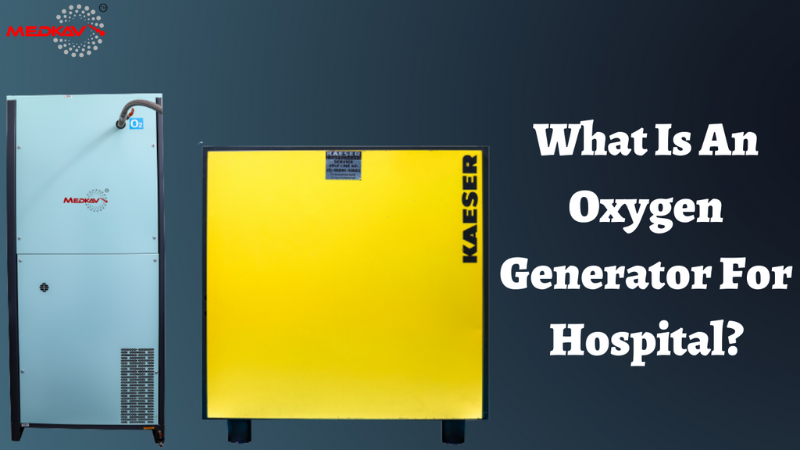oxygen Generators Produce gaseous oxygen on-site and supply a cheap, dependable, and safe alternative to plain oxygen gas supplies like cylinders or cryogenic liquid. and also the design is made to figure round the clock, 24 hours each day, seven days per week. Each generator has an automatic start/stop capability that enables it to begin and stop per the number of energy consumed. An oxygen generator could be a device that uses pressure swing adsorption, a kind of selective adsorptive technique, to separate oxygen from compressed gas (PSA).
The PSA Oxygen Generator is created from two zeolite molecular sieve columns. Compressed gas is introduced into the active column and flows up through the zeolite. While nitrogen flows through, oxygen and other undesirable gases are absorbed. After that, the active column is fully pressured. The column becomes inactive because the pressure is released, and it regenerates completely during the depressurization process. Each generator is created from two columns, one in all which is active and therefore the other inert, to confirm a continuing supply of oxygen. They trade roles at the tip of every column cycle.
Features That Come As Standard
• SIEMENS colour touch panel system
• Moisture protection with a molecular sieve
• Automatic start-up and shutdown
• For continuous monitoring, a built-in purity analyzer is included.
• Reliable - designed to run continuously.
• Designed to face up to dynamic pressure.
• Piping in stainless-steel with a strong Design (AISI316)
• logging of information (saved on memory card)
• Alarm (audio/visual)
• Controlling the purity
Features available as an option
• GSM modem (remote start/stop, SMS status, and SMS alert warning)
• a totalizer and a flow metre
• Oxygen temperature Sensor could be a sensor that measures the number of oxygen within the atmosphere.
• Sensor for determining temperature
• Connection to Modbus TCP/IP
• Controlled by a distant
How Do Hospitals Make Oxygen Gas?

As the demand for oxygen continues to stay a priority, here's a lowdown how oxygen is created and employed in hospitals.
Oxygen is supplied to hospitals through several ways:-
• Vacuum insulated evaporator, this enables for bulk storage of oxygen for medical applications, the LOX is evaporated into concentrated O2 supply, oxygen is drawn off PRN more experienced a vaporizer then becomes gas and piped to individual wards. Oxygen cylinder is employed in small medical centres often with low patient capacity, oxygen is delivered through a mask, nasal cannula oxygen tent and hyperbaric. Oxygen concentrators are medical devices that assist patients with low levels of oxygen in their blood. Oxygen concentrator receives air, purifies it to 90-95% pure oxygen so distribute this air, oxygen concentrator features a 5 step CONCENTRATOR PROCESS:-
1. It takes air from room
2. Compresses the oxygen
3. Extracts nitrogen from air
4. Adjusts the way air is delivered
5. then delivers oxygen-rich air
How Can We Get Medical Oxygen From Air?
Oxygen could be a highly concentrated gas which will be acquired in a very sort of method.
One method is cryogenic distillation, which involves liquifying air. This process produces oxygen in air separation plants, where the air is chilled and therefore the oxygen is distilled in step with its boiling point. The similar procedure is employed to separate liquefied air into argon and nitrogen.
A contraption called an oxygen concentrator also can produce oxygen from the air itself. An oxygen concentrator is "a self-contained, electrically driven medical equipment designed to concentrate oxygen from ambient air," per a Ministry of Health and Family Welfare remark.
Pressure swing absorption (PSA) plants are a 3rd thanks to generating oxygen. A PSA oxygen plant uses a technology that collects nitrogen from the encircling air so as to concentrate oxygen for hospital use. They function at near-ambient temperatures and trap oxygen at air mass using adsorbent materials (materials that capture a substance on their surface) like zeolites, C, molecular sieves, and others.
Once obtained, oxygen is stored either in gaseous form in cylinders and tanks fraught, or in liquid form in cryogenic tanks at extremely low temperatures.
Do Hospitals Have Oxygen Generators?

The COVID-19 pandemic has exacerbated an already-existing oxygen shortage in several low- and middle-income countries (LMICs). The overwhelming number of patients in need of oxygen therapy vastly outnumbers hospital and health-care facility capacity: each day, approximately half 1,000,000 COVID-19 patients in LMICs require oxygen therapy. Every year, an estimated 4.2 million children with pneumonia are unable to urge this life-saving medicinal gas. As a part of the COVID-19 response, tens of thousands of oxygen concentrators are provided to health facilities around the world. Although these devices are crucial within the treatment of COVID-19, the quantity of patients they'll reach at just one occasion is restricted. To serve health centres with many patients at a time, large-scale oxygen sources are required.
In just some months, UNICEF collaborated with industry to bring the package from concept to reality. Oxygen Plant-in-a-Box kits are now on their thanks to help countries address the present pandemic.
Thousands of patients' lives are going to be saved as a result of this breakthrough. With oxygen as an important treatment for COVID-19, furthermore as children with pneumonia, moms with delivery problems, and unwell babies, countries are able to recover more quickly.
Best oxygen gas generators for hospitals...
In India, medical oxygen plants are established and are operational in an exceedingly large number of hospitals. Medical oxygen produced by a medical oxygen plant is shipped to ICUs (Intensive Care Units), OTs, and other medical facilities (Operation Theaters). It's often used as a substitute for inhalation of general anesthetic during anaesthesia to lower the number of oxygen inhaled. A cylinder manifold is now the source of medical oxygen. Smart hospitals are now reaping the advantages of a medical oxygen generator, which has an onsite medical oxygen gas generator likewise as a cylinder backup.
Hospitals all around the world are discovering that having a medical oxygen generator on site is a highly reliable and cost-effective solution. The solution for their oxygen needs for their patients is an onsite oxygen plant. It saves your hospital money by eliminating the costs of obtaining, receiving, and monitoring oxygen supplies. Daily refilling costs money, as do injuries from manual handling and the cost of cylinder stocking. Bottled gas supply might be quite expensive if the oxygen supplier is in a faraway area. If the operator does not take attention, hospitals can run out of medical oxygen cylinders .
Features to look for in a Medical Oxygen Generator include:
1. It can save your life.
2. Constant supply 24 hours a day, 7 days a week
3. Annual savings; R.O.I. ranging from a few months to a maximum of 18 months!
4. Unlike cylinders, there is no need for transportation or refilling.
5. Unlike liquid oxygen tanks, there is no need for bulk storage. MedO helps you save space, time, and money.
6. There are no instances of irregularity or dependency.
7. The chances of a price increase every year are nil.
8. Installation is simple (Roof, Basement, beside the hospital building)
9. At least ten years of life, and possibly longer if maintained according to protocol
10. The best customer service and a breakdown protection plan!

